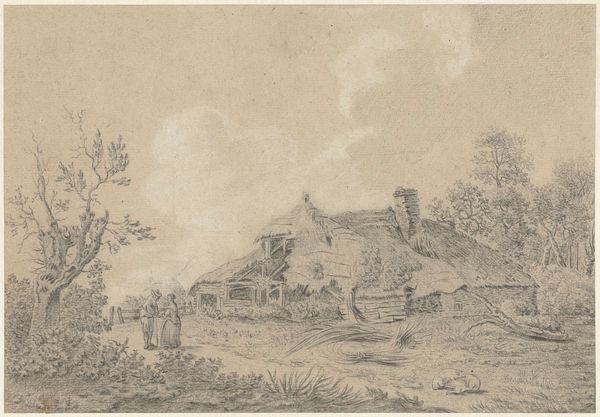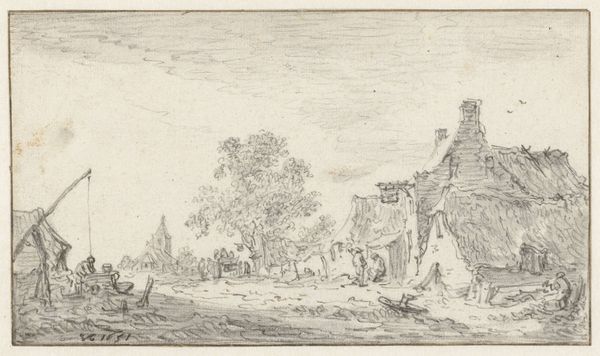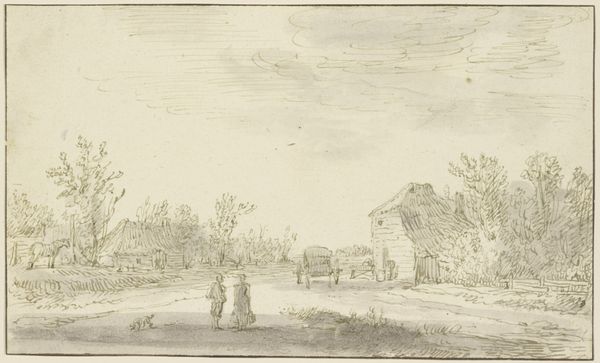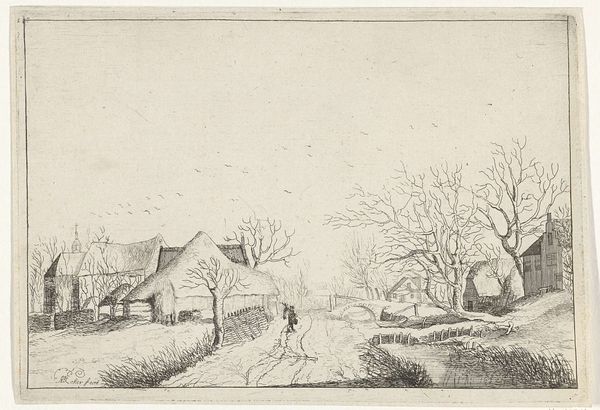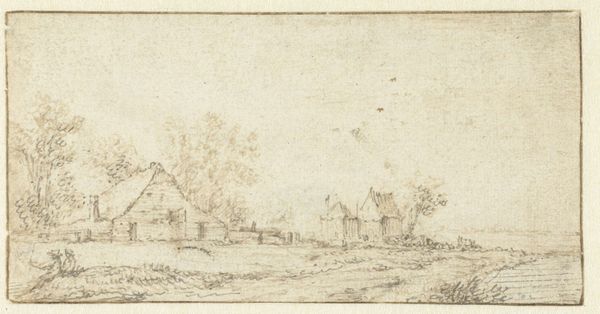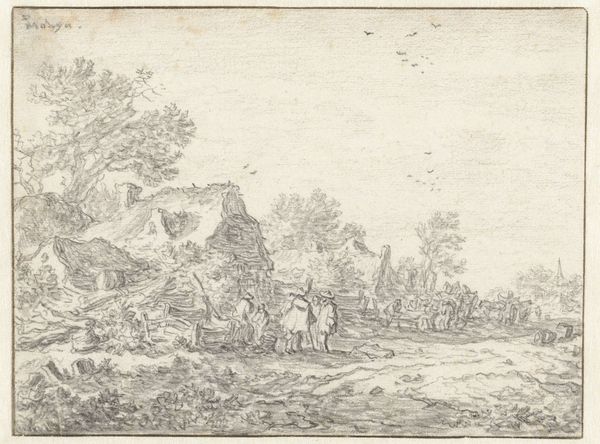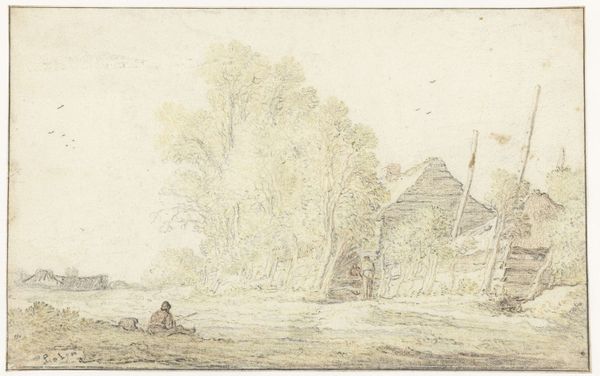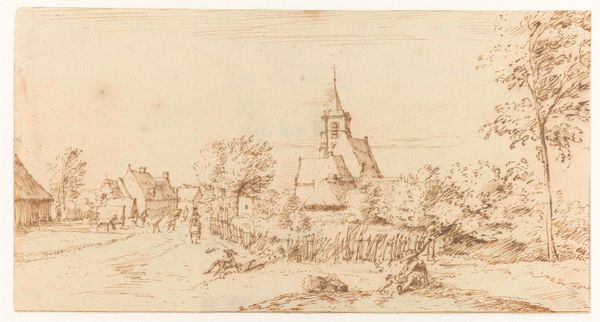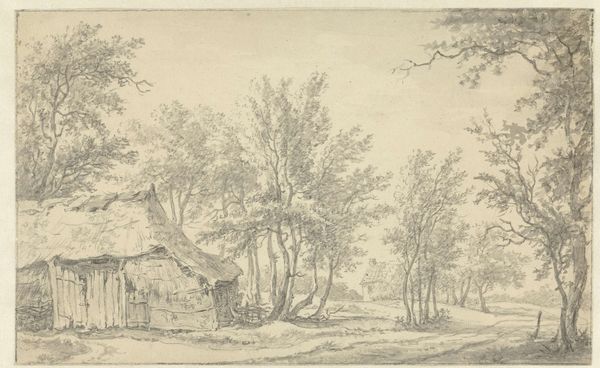
drawing, paper, ink
#
drawing
#
dutch-golden-age
#
landscape
#
figuration
#
paper
#
ink
#
realism
Dimensions: height 148 mm, width 233 mm
Copyright: Rijks Museum: Open Domain
Curator: Welcome. Today, we’re exploring a drawing by Abraham Bloemaert titled "Erf met boerderij en schuur," or "Farm with farmhouse and barn" in English, created sometime between 1600 and 1610. It’s currently held here at the Rijksmuseum. Editor: Immediately, I'm struck by a certain quietude. There’s a subtle atmosphere, almost melancholic, evoked through the muted ink tones and the solitary figure. Curator: Yes, the tonality is quite restrained. Notice how Bloemaert masterfully uses light and shadow to define forms and create depth, primarily through delicate strokes of ink on paper. Observe how the light seems to softly illuminate the thatched roofs. The formal realism is quite pronounced here. Editor: Beyond formal aspects, what does it say about rural life at the turn of the 17th century? I wonder about the labour behind those cultivated plots, the socio-economic realities. The figure seems weighed down, burdened almost; is this an accurate visual representation, or are we idealizing the scene in retrospect? Curator: I see your point. From a formal perspective, the composition uses the fence to visually connect these farm buildings. We are given a clear perspectival depth in the depiction, even a sort of charming imperfection that suggests the conditions of this life, rather than idealized fiction. It evokes a certain genre sensibility through an elegant structure. Editor: Indeed, but one must ask—elegant for whom? These sorts of scenes became increasingly popular for wealthy landowners who frequently bought artwork. Looking closer, the seated objects and sagging roofline suggest structural poverty, neglect of important support mechanisms in this man's life and home. Curator: It’s an interesting perspective. If you look closely at the composition, the angles, the lines – everything points toward a sort of harmony in the domestic. A man taking respite and using this space in combination with structural support. A semiotic gesture, pointing towards both. Editor: Bloemaert clearly invites such a reading. Ultimately, I believe its success resides in opening discussions on the historical forces shaping early modern society through everyday objects. I will surely return to study more. Curator: Agreed, both methodologically and practically. Thank you for helping bring "Farm with farmhouse and barn" into deeper focus.
Comments
No comments
Be the first to comment and join the conversation on the ultimate creative platform.


